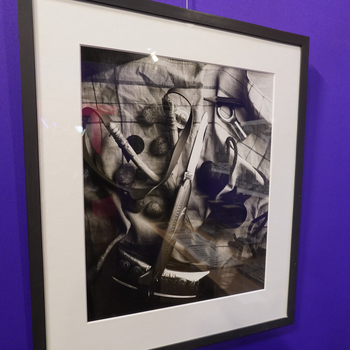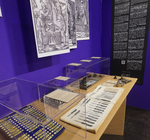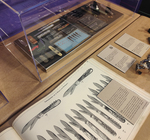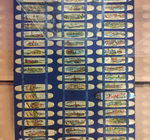
Knives on the sharp edge of history
 The history of knives is a testament to mankind's ingenuity, adaptability and creativity. From simple stone tools to precision-crafted blades, knives have played a crucial role in shaping our civilization.
The history of knives is a testament to mankind's ingenuity, adaptability and creativity. From simple stone tools to precision-crafted blades, knives have played a crucial role in shaping our civilization.Originally simple tools made of stone and bone, knives evolved over time into the versatile instruments we know today. Prehistoric people used them not only for hunting, but also for building shelters and preparing food.
In ancient civilizations, knives were not only essential tools for survival, but also had cultural, ceremonial and symbolic significance. In the Stone Age, the idea of attaching a separate handle was discovered, which made work easier. Pocket knives and pocket tools evolved from the old hunting knife, which hundreds of years ago was often carried in a beautifully decorated leather sheath inside the bootleg. With the refinement of clothing and changes in table manners, the folding knife developed, which over the course of time was expanded into a multi-purpose utensil.
In the course of civilization, knives became effective close combat weapons. In ancient times, warriors used daggers and short swords, each with a unique design and craftsmanship. In medieval Europe, knives became larger and longer and evolved into swords. Later, other weapons such as spears and axes appeared and knives became weapons of war.
In the 15th century, wealthy men began to carry knives that served a dual purpose: for defense and as a tool for eating. At this time, it was customary for each guest to bring their own knife to meals. To curb aggressive behavior, Cardinal Richelieu persuaded King Louis XIV to ban the use of sharp knives at the dinner table in the late 1730s. This led to the development of the round-edged dinner knife as we know it today. As a round knife could not impale anything, a fork with four prongs was developed.
Solingen has been producing cutlery and edged weapons from local raw materials for centuries. The large forests provided charcoal for forging, while streams supplied the energy for whetstones. The craftsmanship of the mountain dwellers and the women who carried the sharpened blades to the manufacturers contributed to the success. The majority of the products were sold at markets in Cologne. The quality mark was "Me fecit Solingen" - "I was made in Solingen". As early as 1684, 1,500 trademarks existed as a guarantee of Solingen quality.
Industrialization revolutionized knife production through mechanized processes such as steam-powered machines, which made it possible to produce affordable knives on a larger scale. This made knives accessible to the general public. Modern knives are mainly made of steel, ceramic or titanium and are characterized by ergonomic design, durable materials and innovative locking mechanisms to optimize functionality and safety.
One of the first documented knives for promotional purposes was launched at the Chicago World Fair in 1933. The compact pocket knife with corkscrew, bottle opener, blade and penknife was created for this important international exhibition in Chicago in the 1930s. Due to its high quality, compactness and fine engraving, it quickly became a prized collector's item for national and international visitors to this important trade fair. Knives for the brand-name manufacturers Omega and Magirus were produced at the same time.







